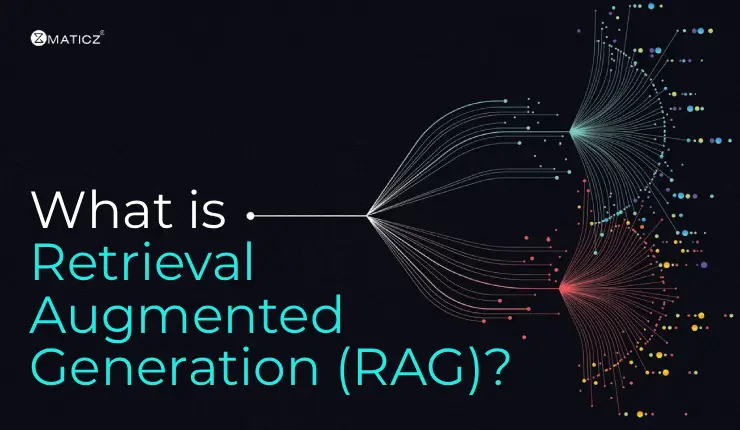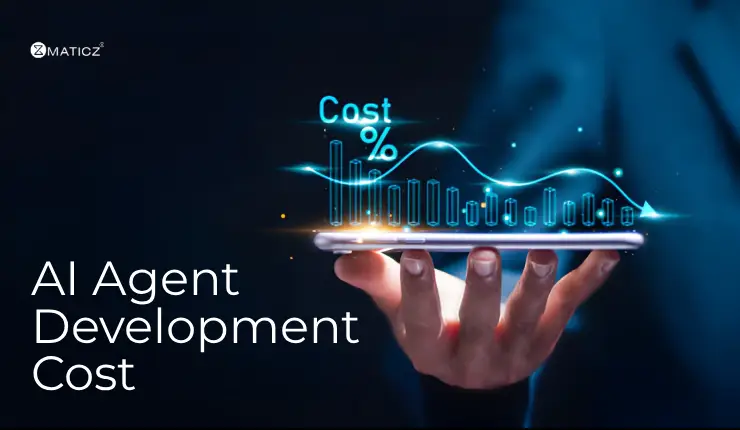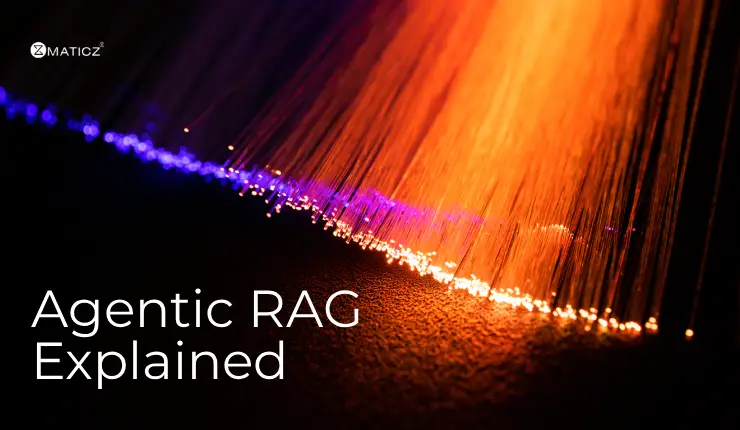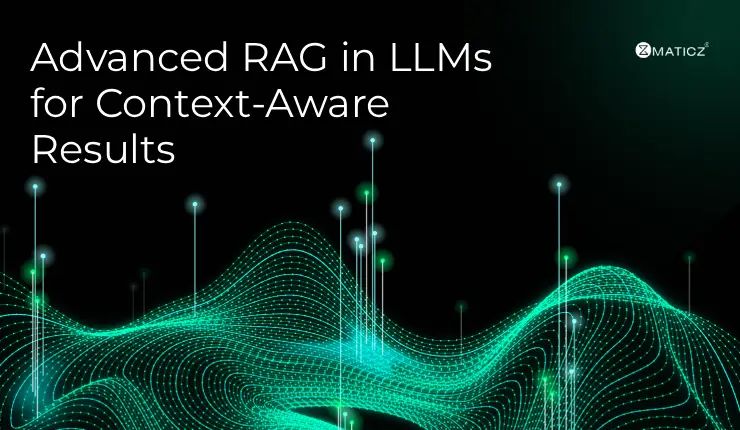Share Posts

What is Retrieval-Augmented Generation (RAG)?
46
787
103
Artificial intelligence has witnessed explosive growth over the last few years, reshaping industries, automating workflows, and redefining what’s possible in human–machine interaction. But even with all its power, traditional Large Language Models (LLMs) like Claude, Gemini, and GPT majorly face one fundamental limitation.
“They rely solely on the data they were trained on.”
When asked about recent events or specialized content, they often “hallucinate” and confidently generate completely incorrect information.
That’s where Retrieval-Augmented Generation (RAG) steps in, a breakthrough approach that combines the generative power of LLMs with the precision of information retrieval systems.
What is RAG?
Retrieval-Augmented Generation (RAG) is an advanced AI architecture designed to make language models more intelligent & up-to-date.
In general, it merges two worlds:
- Information Retrieval
- Language Generation
To enable AI systems to provide responses that are both creative and factually grounded.
In a traditional LLM, the system generates answers purely based on the data it was previously trained on. This static knowledge can quickly become outdated and may lead to inaccuracies, especially in fast-changing domains like technology and healthcare.
RAG addresses this limitation by introducing the
- Retriever mechanism: A search mechanism designed to query an external, authoritative knowledge base (like private documents, a database, or the live web in real time).
- Generator: A large language model that synthesizes the final response from the most relevant information with precision.
This simple yet powerful combination allows RAG systems to minimize hallucinations, enhance accuracy, and adapt across domains without retraining the entire model.
It’s a major step toward creating AI systems that are not just intelligent but contextually aware and knowledge-grounded.
How Does RAG Work?
While RAG might sound complex, its underlying process is built on a simple yet powerful idea, it combines the reasoning abilities of a language model with the factual grounding of a search system.
As we discussed before, RAG operates through two primary components: a retriever and a generator. Together, they create accurate information.
Retriever
The first step in the RAG pipeline involves identifying relevant data.
When a user submits a query, the retriever searches throughout the connected knowledge sources to find the most relevant content.
This is powered by vector search technology, where both the query and documents are converted into embeddings. The model then compares these vectors to determine which pieces of text are most semantically similar to the user-given query.
Generator
Once the retriever gathers the most relevant documents, the generator, typically an LLM, comes into play.
It reads both the user query & the retrieved context, then synthesizes a coherent response to produce the human-like answer that integrates this information naturally.
The result is a response that not only sounds fluent but is grounded in real, external data and reduces hallucination.
This brings the best of both worlds together, the precision of retrieval systems & the creativity of generative AI, building a foundation for AI models that are not just fluent but also factually reliable.
RAG Core Benefits - Why it's a game-changer in AI
The evolution of AI has always been driven by one goal. To make machines think, reason, and respond more like humans. But traditional LLMs have outdated knowledge and overconfidence in incorrect outputs. That's where retrieval-augmented generation emerges as the solution that bridges these gaps.
1. Overcoming the Limitations of Traditional LLMs
LLMs are trained on vast datasets, but their knowledge is frozen at the time of training. When asked about recent events, they often produce incorrect answers. RAG will eliminate this issue with real-time access to external sources, which allows AI systems to fetch the latest data before generating a response.
2. Boosting Accuracy and Context Awareness
RAG significantly enhances accuracy and contextual understanding. For instance, in enterprise settings, a RAG-enabled chatbot can access internal documentation and policies and even use FAQs to deliver more precise results to the end users.
3. Domain Adaptability Without Retraining
Another revolutionary advantage of RAG is its ability to adapt to new domains effortlessly. Instead of retraining the base model for each niche, the retrieval-based approach will simply allow connecting the AI to relevant document repositories. Which saves both time and cost.
4. Transparency and Explainability
Unlike black-box LLMs, RAG provides a level of transparency by showing the exact source behind its response. This traceability helps users verify information and builds trust, especially in more critically regulated industries like finance, law, & healthcare.
5. Enabling a New Era of Knowledge-Driven AI
Ultimately, RAG is redefining how AI systems interact with information now. From powering enterprise knowledge bots to improving research workflows, RAG is accelerating the shift toward AI systems that are not only intelligent but also trustworthy.
RAG in the Real World
The real power of retrieval-augmented generation becomes clear when you look at its impact across different sectors. Here are some of the most impactful industries at a glance:
Healthcare
RAG-powered systems can access the latest medical journals and clinical trial results. Instead of relying on a static model trained on older datasets, a RAG assistant can pull in the newest data, helping doctors make better decisions and reducing the risk of recommending medications based on outdated information.
Finance
RAG improves accuracy and risk assessment by retrieving relevant reports. For example, a RAG system can surface the recent market data that justifies a recommendation, making decisions faster.
Education
RAG in education helps through personalized tutoring & research assistance, gives students access to up-to-date academic sources, summarizes recent findings, & more to improve the quality of citations.
Customer-service
RAG transforms customer support by making AI-powered chatbots and virtual assistants instantly knowledgeable about proprietary data. Companies like DoorDash and Microsoft (Copilot) use RAG to create advanced customer support agents for personalized answers.
Legal services
The legal industry, with its reliance on vast, constantly updated, and highly specific documentation (case law, statutes, contracts), is a perfect fit for RAG to instantly retrieve and summarize the most relevant legal documents from massive databases.
Across all these sectors, the unifying benefit of RAG is the same: AI systems move from guessing based on frozen knowledge to acting as live. This shift improves trust & unlocks new workflows where humans and machines collaborate.
Challenges and Limitations of RAG
While RAG represents a major leap forward in AI intelligence and reliability, it also comes with challenges. Understanding these limitations helps businesses to set realistic expectations and build better systems.
Retrieved Data Quality
RAG’s accuracy is only as strong as the data it retrieves. If the connected databases, documents, or web sources contain biased, outdated information, the generated responses will inherit those flaws. This “garbage in, garbage out” problem means organizations must invest in curating & maintaining high-quality knowledge bases.
Retrieval Latency or Failure
Unlike static LLMs that generate responses instantly from their training data, RAG requires an additional retrieval step before generation. This process includes searching large vector databases, which incurs latency.
And also, RAG is prone to specific failure modes.
The "Chunking" Dilemma:
This is one of the most significant technical hurdles.
- Too Small: Chunks lack sufficient context, leading the model to miss crucial facts.
- Too Large: Chunks dilute the signal with irrelevant "noise," making it hard for the LLM to identify the correct answer.
Semantic Mismatch:
The model fails to retrieve the correct document because the user's query and the document's language use different terminology
Irrelevant Documents:
Irrelevant chunks are retrieved, effectively "stuffing" the LLM's context window and pushing the actual answer out.
Cost and Infrastructure Complexity
Implementing RAG isn’t as simple as deploying a single model. It involves maintaining vector databases, retrievers, embedding pipelines, and storage infrastructure. These systems demand both computational resources and ongoing engineering effort.
Information Misalignment
More context doesn’t always mean better answers. Feeding too much retrieved text into an LLM can cause context dilution, where the model struggles to prioritize the most relevant details, which leads to partially correct but misleading answers.
Lack of Standardization
Because RAG is still young & evolving, there’s no single standard for evaluating retrieval quality. Developers often rely on custom heuristics to measure performance, making it difficult to compare systems or track improvements objectively.
Security Risk
Because RAG often connects to external or internal data sources, it introduces privacy and security concerns. Sensitive corporate documents, customer data, or proprietary research could be exposed if retrieval pipelines aren’t properly secured, especially when dealing with regulated industries like healthcare or finance, and more.
Conclusion
Retrieval-Augmented Generation (RAG) marks a turning point in the evolution of artificial intelligence. By blending the reasoning power of LLMs with real-time data to create a more accurate and context-aware model.
As industries adopt AI at an unprecedented speed, the demand for systems that are transparent as well as grounded in verified information will only continue to grow. For businesses looking to harness the full potential of AI, now is the ideal time to explore RAG-powered solutions to modernize workflow.
At Maticz, we help organizations build intelligent, customized AI systems, including RAG-based models, enterprise AI assistants, automation tools, and domain-specific knowledge engines. Whether you’re aiming to streamline operations, we deliver scalable AI solutions tailored to your goals.
Ready to ground your AI in verifiable data? We’re here to help you out. Request your RAG solution consultation today.
Tap Into the Future
The latest insights, posts, and project updates - straight to your inbox.




